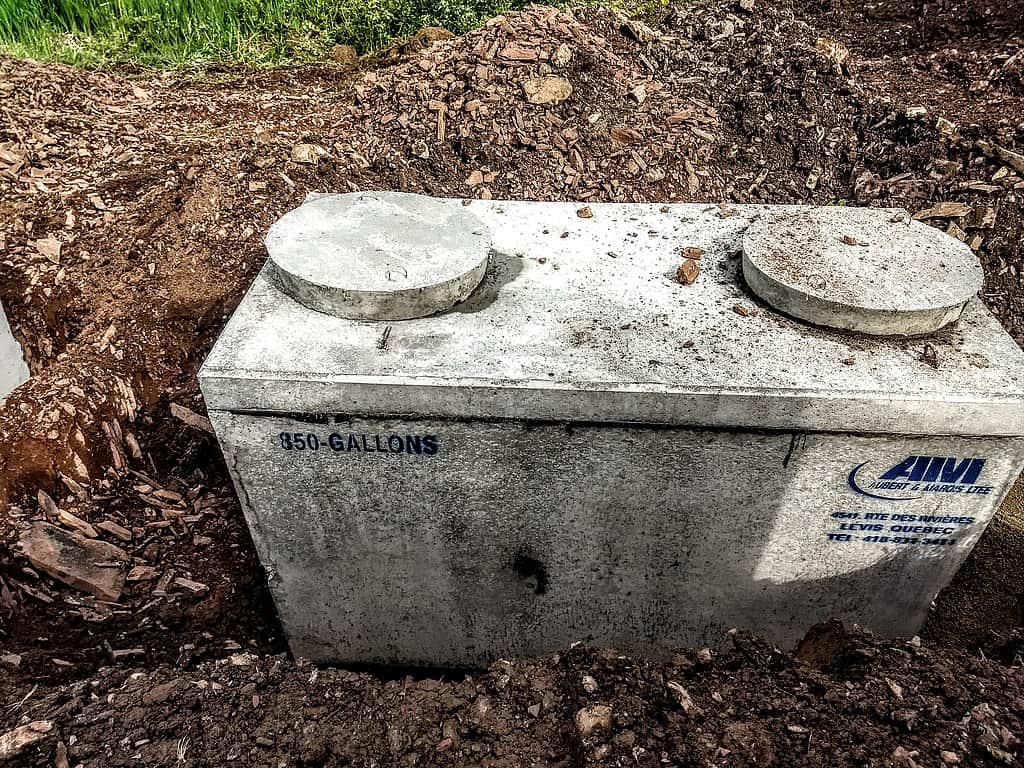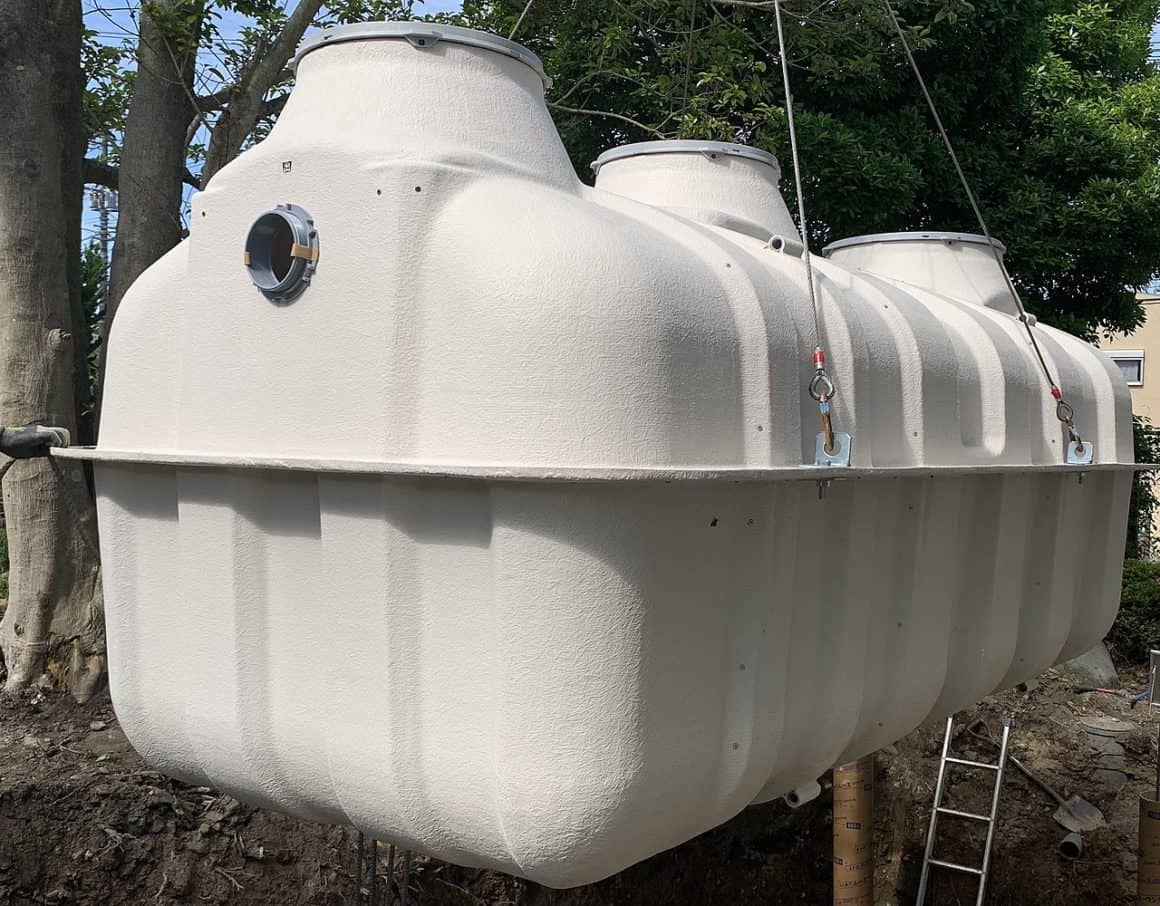Let’s face it: no one wants to talk about it, but we’re all human, and we all have waste to deal with. Some people opt for using a septic tank to filter their waste – it’s a green solution, and it’s pretty cost-effective. Everyone who has a septic tank will get it fitted underground and go about life blissfully, unaware of the stinking issues that can bubble up beneath the surface and leave you standing in an unpleasant puddle of mud. Understanding some common issues surrounding septic tanks can help prevent you from smelling the not so roses. Throughout this article, we will be looking at common causes of damage to septic tanks that leave your property smelling peachy.
What is a Septic Tank?

For those who don’t know, a septic tank is a sewage system that takes in your waste. It separates this waste into three different sections – solids at the bottom, water in the middle, and oils at the top. The liquid layer is then siphoned through a soakaway system, which percolates the water and prevents unpleasant smells. There are many reasons why you might want to use a septic tank, but they are most common in rural areas where access to mainstream sewage is limited.
Maintenance
Just like your body needs regular maintenance to stay healthy, so does your septic tank. It is suggested that you have your tank checked over every year. This isn’t a job you’ll want to do yourself, so hire a trusted professional like Halls Septic Services, who will carry out full inspections and complete any work that needs doing, as well as pumping your septic tank – find out more about their services here.
There are things you can do on a day-to-day basis to help maintain your tank. For example, be careful about what you put down your drains by avoiding heavy food waste like fats, and avoid flushing your sanitary products – just like you would a normal sewage system. It’s good to find trustworthy septic service providers and have them inspect your tank regularly to ensure it’s functioning properly. This will help prevent any major issues in the future and save you from costly repairs.
Old Age

When we get old, our bodies are prone to malfunctions, which is a conversation for another time – but the same goes for your septic tank. As well as the parts in your septic tank malfunctioning, such as the soakaway system, time and technologies have advanced, which means new models are available; these models will be more efficient.
Baffled?
Don’t be baffled. The baffle is the name given to a barrier between the tank and the soakaway; it prevents any solid waste from being passed through. A soakaway system carries your wet waste and treats it by percolating it into the soil. As the water passes through the perforated pipe, it is gradually dispersed into the soil and treated – meaning you don’t get any of the nasty smells. However, if your baffle is broken, your waste will travel through the pipe and block the holes. This means big problems for your septic tank as all of your waste will eventually back up and enter your house, leaving a devastating mess – you may as well not have a toilet at this point.
Fancy a Dip?
Luckily, you’re not being invited to take a dip in your septic tank – but you probably cringed for a second, didn’t you? The dip pipe in a septic tank is similar to a baffle in that it controls what type of waste is allowed to exit – some tanks have both a baffle and dip pipe. We won’t go into this too much, but if your dip pipe malfunctions, you could be left with quite an unpleasant water feature in your house.
Watch Where You’re Driving!

Septic tanks live underground, so they’re out of sight and often out of mind – this is all well and good until you drive over it. Driving a regular car over your tank should be fine, but as most tanks are located in the countryside, they can be driven over by much bigger machines. Driving over your septic tank in a tractor, for example, will put enormous amounts of pressure on the ground that your tank isn’t designed to take; you could be left with a collapsed tank and an unsightly mess.
Shifting Soil
You’ll probably know that the earth beneath our feet can shift from time to time without us even noticing. Unfortunately, your septic tank does notice and can slowly develop small cracks under pressure. Two things can happen – the backing up process might happen faster, meaning you need to pump your tank more often. External moisture from the ground can also seep into the tank, which means the waste inside can’t be separated.
Nature’s Path
Like your septic tank, the earth is home to all sorts of natural things – like tree roots. Whether you have large trees growing nearby or smaller bushes, any roots growing nearby can penetrate the tank’s walls. You can be left with water entering the tank, as discussed previously, or water exiting the tank, which will lead to a lot of smelly problems.
It’s Gonna Blow!
Under the ground is your septic tank, and under that, there is more water. This water can build up (hydrostatic pressure) to such a point that your tank is forced out of the ground. This is a big problem as the drainage pipe will probably be a bit detached by this point, which means that you’ll have a new sprinkler system spraying the inside of your house… with waste.
Turning Tables
When your tank is first installed, the contractors would have carried out tests to ensure the ground conditions are correct – this includes making sure that the earth is dry enough (so the soakaway can do its job) and stable. However, over time, things have a habit of changing, and the same goes for the ground. There might be more moisture in the soil, and we all know where that can lead. It’s important to get your ground percolation tested from time to time (you might even be able to do this one yourself).
Did You Install it Right?

Installing a septic tank is an intricate process and should only be done by a professional, so you need to make sure it’s done right in the first place. A faulty, installed septic tank can lead to a whole host of problems. The soakaway needs to be the right size for the property; if it’s not, you could be left in a stink. Further, incorrectly fitted septic tanks that do not adhere to regulations could leave you with a hefty penalty to face – no matter whether you installed it or not. When you are choosing your contractors, make sure that they are certified and licensed first.
This doesn’t exactly make for a pleasant read, but hopefully, you get the picture now… quite vividly. To avoid any of these issues, the best thing you can do is make sure your tank is installed by a professional and regularly maintained. This is one of those occasions where the out-of-sight, out-of-mind philosophy doesn’t play in your favour. Keep an eye out for any signs of damage before it becomes a huge problem.

